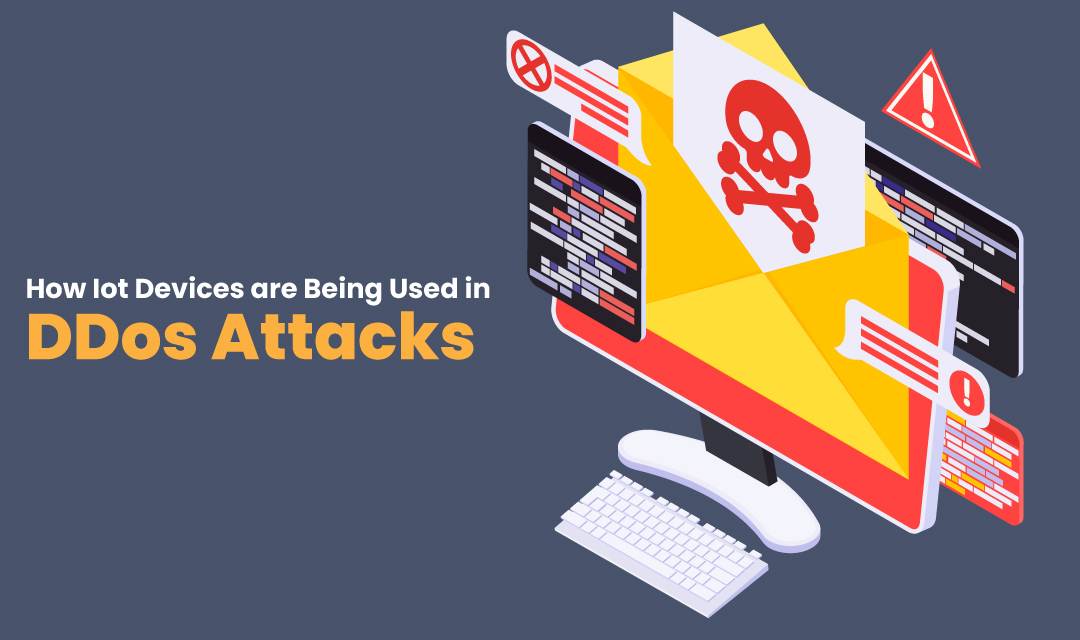
Most of us use our Google Homes, smartwatches, security cameras, and other handy gadgets on a daily basis. The Internet has undoubtedly made our lives ten times easier than before. However, the thing that makes these devices so convenient and easy to use is the same thing that makes them most vulnerable to malicious cyberattacks.
Unfortunately, unprotected IoT devices are the number one go-to targets for hackers looking to expand their botnet and take down servers, costing their targets hundreds of thousands of dollars. Even if it doesn't affect you financially, your device could become one of the culprits without you ever knowing.
Spreading awareness is a small first step toward global IoT safety, but it is one that we have to make. For starters, every user should learn about how DDoS attacks work and how they exploit IoT devices.
What Is the Internet of Things?
The Internet of Things represents the network of devices that are all connected to the Internet, communicating with one another to provide the finest and the most personalized user-experience possible. For instance, modern security cameras and baby monitors can be connected to a smartphone, which can then be used to watch the live footage or control certain functions.
There are currently more than 20 million connected devices in the world. Besides that, for the first time ever, in 2020, the number of IoT connections surpassed the number of non-IoT connections, according to IoT Analytics. What's more, they are constantly on the rise. More and more industries and sectors are heavily relying on it (health care, for instance). In fact, some even predict that fully personalized IoT smart homes will soon become a new normal.
With the rise of new technology, especially 5G and Wi-Fi 6, IoT devices are multiplying and becoming much smarter and faster. However, there's still a long way to go. There are many caveats that need to be addressed, but by far the biggest one is related to security, or the lack thereof.
Why IoT Devices Are Perfect Targets for DDoS Attacks
Speaking of security issues, all it takes is a hacker with little experience to breach an IoT-connected device, and thus access all of your other devices and private data. Similarly, a hacker can also effortlessly hijack the devices and use them to execute a DDoS attack.
The most common IoT problems that enable hackers easy access are weak or non-existent passwords, update issues, various loopholes and oversights, and the overall absence of security firmware. Lack of state or nation-wide regulation doesn't help either, so manufacturers aren't even required to secure it.
One of the greatest examples of how hackers can take advantage of this caveat is the infamous Mirai botnet. It scans the Internet for IoT devices, attempting to log into each one using common password combinations. Most IoT devices, especially cheaper and low-quality ones come preconfigured with a simple generic password. Sadly, many users forget to change it, leaving the door wide open for hackers to enter. Thanks to AI and machine learning, finding weak links like these has never been easier.
Recently, hackers have increasingly been taking advantage of WS-Discovery (WSD) protocols for automatic discovery and control of other devices, which are notorious for allowing unauthorized access. Doing so can make their attack up to 95% more effective.
How DDoS Attacks Work
A Distributed Denial of Service (DDoS) attack occurs when the hacker uses a network of hijacked devices called botnet to overwhelm a server with traffic. They typically do so anonymously, from a remote location, so they can't be tracked down.
Unfortunately for online businesses, the cost of a DDoS attack can be hefty. Just an hour of downtime alone can cause the company to lose hundreds of thousands in profit, not to mention the stolen data and brand reputation damage. Reasons behind these attacks are various, from political outrage to competitive advantage or money (ransom).
The most troubling fact about DDoS attacks is that they are constantly evolving. The fairly recent shift to peer-to-peer networking has made these attacks basically unstoppable, and AI and 5G made them quicker. Nowadays, a DDoS attack can last for minutes and still have disastrous consequences.
How You Can Protect Your IoT Devices
Here are some actions you can perform to ensure that your device is safe, or at least harder for hackers to breach:
- Reconfigure your router settings and come up with a better name and password.
- Use a stronger encryption protocol, such as WPA2.
- Change the default usernames and passwords for all of your IoT devices.
- Consider adding a two- or multiple-step verification.
- Reconfigure the settings on your devices regarding privacy and security.
- Don't miss any updates.
- Keep an eye on who connects to your network.
Experts suggest implementing a multi-level security solution in order to avert disasters and mitigate the damage. In other words, you might want to opt for multiple servers, increase your bandwidth, etc. You can also purchase monitoring tools to help you detect spikes in traffic. Nevertheless, you should have a detailed response plan prepared in case you ever encounter a DDoS attack.
Conclusion
If we want digitalization to become our reality, we need to make sure IoT-connected devices are completely safe first. It's imperative for tech companies to start implementing a more reliable and impenetrable authentication and connection method in the future. Also, more and more states should look up to California and carry out regulations that would require manufacturers to pay more attention to the security of their products.
Share this post
Leave a comment
All comments are moderated. Spammy and bot submitted comments are deleted. Please submit the comments that are helpful to others, and we'll approve your comments. A comment that includes outbound link will only be approved if the content is relevant to the topic, and has some value to our readers.

Comments (0)
No comment